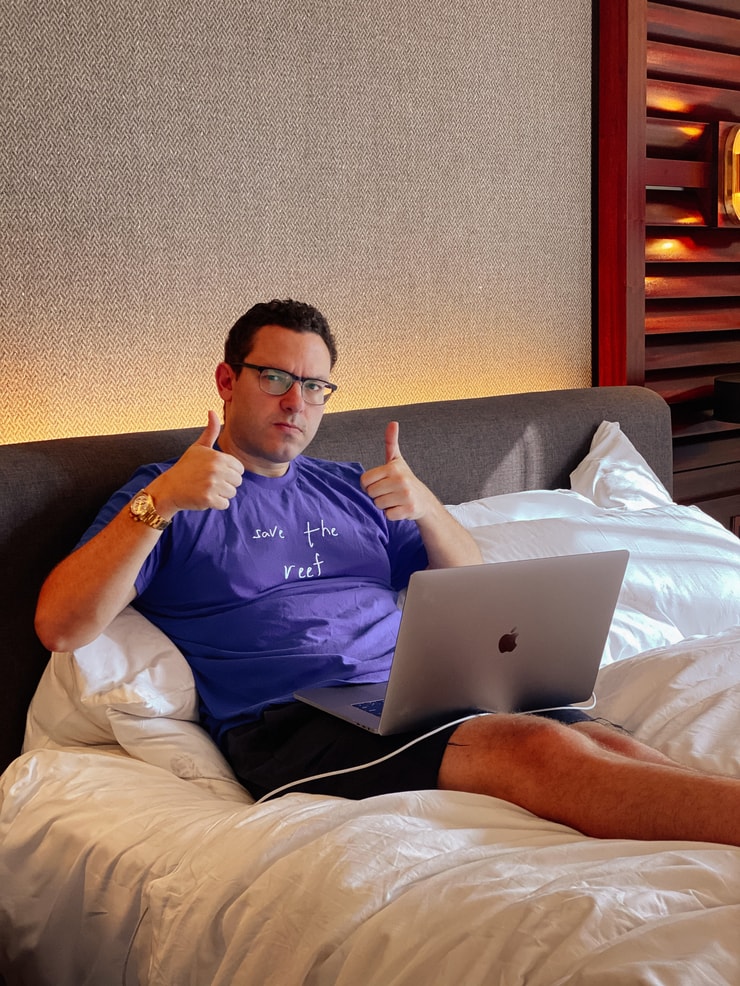Traders ask me which brokers I prefer. My answer: E-Trade is one broker I use to trade penny stocks. It’s not the only broker I use … but it fits some of my trading needs.
Too many people want hot picks or quick ways to get rich fast. That’s why most traders lose. There’s no “easy” button in trading.
What’s crucial is having the right mindset, strategy, and tools. And when it comes to tools, your broker is critical.
I’ve used dozens of brokers over the years. I’ve tried using brokers with the best shares to short and the ones with the cheapest commissions. And I’ve tried ones that charged the highest commissions to see if there was any value in that.
There’s no such thing as a perfect broker. I want to emphasize that. It’s about finding the right brokers for you and your strategy.
E-Trade fits some of my needs for trading penny stocks. Let’s break it down…
Table of Contents
Can You Trade Penny Stocks on E-Trade?
As I said, I trade penny stocks, and I use E-Trade. Why? I’ll explain…
A penny stock is a stock that trades for $5 a share or less. It could be an OTC stock trading for fractions of a penny or a listed stock that trades at $4.95.
New to penny stocks? Start your market education with my FREE online penny stock guide.
I start every new year with a small account. Each year, I reset my account to roughly $12,000. I’ve found that’s a technique I like, and it’s how I teach my students my go-to penny stock strategies.
Ready to start your trading journey and find your go-to strategies? Start with my 30-Day Trading Bootcamp. One of my top students, Matthew Monaco, helped me put this together. It’s a guide designed to teach you the basics so you’ll be more prepared when you risk your hard-earned money!
I’m here to be that teacher that I never had. I want to see you succeed.
E-Trade Review

2025 Millionaire Media, LLCI mentioned earlier that you have to find the right broker for your needs. E-Trade is one of the brokers that sucks the least for my needs.
When it comes to finding shares to short, E-Trade is a decent option. They have the most shares to borrow in the $2 to $5 range. I also like longing stocks under $1 with them, because their commissions are low.
I’m not saying E-Trade is the perfect broker. No broker’s perfect. The brokers I use for trading penny stocks are SAFER! That’s very important to me.
Some traders are tempted to use specialized brokers with tons of shares to short, but there are risks … What if the broker suddenly shuts down or hits you with fees for shorting?
I know some offshore brokers seem to offer big advantages. But they can be VERY dangerous. You need to look at all the risks.
E-Trade is a multi-billion-dollar company and insured. I feel safer with them handling my money.
And I want to make it clear that I don’t work for them, and they don’t pay me anything to say that. They actually don’t want to work with me since I tell traders to trade less. Brokers don’t like that. They want you to trade as much as possible.
My top trading tip is to think like a retired trader and only trade when a setup is so perfect you gotta come out of retirement. I’m here to educate you in this industry full of scammers.
E-Trade Platforms and Tools
The right tools are key when looking for the top penny stocks to trade.
E-Trade’s two main platforms are E-Trade Pro and Power E-Trade. Both platforms are free with an account. Pro does have minimum trading and balance requirements, though.
Power is E-Trade’s less comprehensive platform, but it still has great features like technical analysis tools, interactive charts, and snapshot analysis.
Active traders might want to use Pro. It’s got quicker execution times, more researchable data, an extensive line of technical analysis tools and drawings, and Level 2 trading data. If you want to use it, you’ll need to make at least 30 trades per quarter or hold a minimum account balance of $250,000.
There’s a mobile app for Power E-Trade. But I don’t recommend that you be in a trade if your schedule doesn’t give you enough time to pay attention.
I still use Pro here and there, but I mainly use the platform I had custom made, StocksToTrade. It’s a powerful trading program that can be integrated with your broker. It has more than 40 built-in scanners, as well as indicators, news feeds, and much, much more. Check it out with a 14-day trial for just $7!
Combine it with the Breaking News Chat add-on feature, which helps you stay on top of the news that matters most to traders.
Trading Options
E-Trade does a nice job when it comes to offering penny stocks. The platform lets you trade both Nasdaq and OTC stocks. Not every broker deals in OTC stocks, and these stocks have had hot runs this year.
I really don’t trade anything much above $10, but the platform does have a bunch of other choices like futures, mutual funds, ETFs, and advanced options, for example. That’s not my thing…
I trade penny stocks, but you don’t have to. One of my top students, Mark Croock, has taken the strategies he learned in my Trading Challenge and applied them to options trading. Learn about his evolved strategy here.
More Breaking News
- HIVE Stock Fluctuations: Explore the Latest Trends
- Quantum Leap Forward: QBTS Stock Dynamics
- 3 Robinhood Penny Stocks Moving on Bitcoin & Trump News
Fees and Service
I don’t care about paying commissions or fees. When you focus on the right trades, those are negligible. Most brokers don’t even charge much anymore, since Robinhood came out with its commission-free platform.
E-Trade doesn’t charge commissions on stocks, ETFs, or options. They do charge a flat rate of 65 cents per option contract, and it’ll cost you to trade futures, bonds, or mutual funds.
For bonds, it’s $1 per bond with a $20 commission fee, and futures are $1.50 per contract plus fees. Mutual funds are $20 per transaction.
If you want to short, you’ll need a margin account. Fees for those vary, but every broker charges interest for them since you’re borrowing the shares from the broker and buying them back later.
I believe you get what you pay for. I think if you go cheap, it’ll cost you more in the long run. I’d rather pay for good service and executions.
E-Trade has a strong reputation for customer service. They seem to know your time is important, and they give you different ways to get in touch with someone for support. You can call, email, or use the site’s 24/7 chat feature.
Pros and Cons of Trading Penny Stocks on E-Trade

2025 Millionaire Media, LLCLike I said, no broker is perfect. I’ll break down some of the pros and cons of trading top penny stocks on E-Trade.
Pros to Using E-Trade
Most of my students trade with small accounts, at least to start. E-Trade doesn’t have an account minimum. They’ve dropped the $500 requirement they had in the past.
That’s one reason I use them for the small account I start with every year. It’s a great option for my students, too. They can trade while they’re learning and putting in the hard work and dedication they need if they want the potential to break free from a 9-to-5 job.
The strategies I teach are for smaller accounts. They aren’t for big hedge funds or investors. My top student Tim Grittani started with $1,500. He’s turned that into over $12.5 million.*
To learn more about what’s possible in this niche, check out “The Complete Penny Stock Course,” a book by my student Jamil. It’s an in-depth tour of my approach for trading penny stocks.
When it comes to trading penny stocks on E-Trade, execution prices are important. You want to have the ability to get in and out of a trade as fast as possible at a good price.
Bad executions could cost you a lot of money over time. I’ve heard horror stories from students about brokers with bad executions. Think about missing out on $200 over and over and over again. That adds up.
That’s why I’ve never minded paying commissions. I’d much rather pay for good execution and service.
E-Trade Con
The biggest flaw I’ve found with E-Trade over the years is that it’s only available in the U.S. They don’t allow anyone to use them internationally. I have students in over 100 countries now. E-Trade just isn’t an option for them yet.
Top E-Trade Penny Stocks to Watch

2025 Millionaire Media, LLCI want to start by saying these are simply stocks to watch, not recommendations to trade. Penny stocks move fast and are very volatile. That’s why I trade them. These stocks could go out of play fast.
You should have a trading plan for every trade. My students and I use my “Trader Checklist Part Deux” as a guide for every trade. It helps us identify good plays and makes sure we only trade the top patterns. Some things we look for are price action, a catalyst, and how much volume has been traded.
E-Trade Penny Stock #1
American Battery Metals (OTCBB: ABML) is one of the strongest battery plays out there. Electric vehicle plays have been exploding lately. The sector has been hot since early 2020. We saw SPI go parabolic on an electric vehicle announcement earlier this week.
E-Trade Penny Stock #2
DSG Global Inc. (OTC: DSGT) is a recent runner that’s part of the EV-charging field. Most electric charging plays are getting more expensive. As long as the EV and charging sectors are running hot, it’s one to keep an eye on.
How Do You Find and Buy Penny Stocks on E-Trade?

2025 Millionaire Media, LLCTools are key to finding the right plays. I used E-Trade Pro before StocksToTrade was around. Now I find all my plays through StocksToTrade’s built-in and custom scanners. My favorite scan looks for the biggest percent gainers. I use it every day.
When you buy stocks with any broker, it can be better to use limit orders. They only execute at the price you specify. I’d rather miss out on a play than chase one. There’s always another play around the corner.
Frequently Asked Questions About E-Trade and Penny Stocks
Let’s go over some frequently asked questions…
How Much Does E-Trade Charge for Penny Stocks?
E-Trade has commission-free trading for all U.S. exchange-listed stocks. They charge a flat rate of $6.95 for OTCs.
Does E-Trade Have Hidden Charges?
E-Trade is very open about its charges and fees. It has a page on its website listing all of them. It charges fees for mandatory actions such as stock splits and reverse splits.
Can You Short Penny Stocks on E-Trade?
Yes, you can short penny stocks on E-Trade. It’s a pretty good broker for finding shares to short, with penny stocks in the range of $2 to $5.
What’s the Top Online Broker for Penny Stocks Trading?
E-Trade and Interactive Brokers are my two go-to brokers for trading hot penny stocks. But it’s smart to research and dig around before choosing your brokers and tools.
The Bottom Line About E Trade

2025 Millionaire Media, LLCAs a trader, you have two accounts: your knowledge account and your money account. There are no guarantees you’ll fill up your money account. Experience tells me that filling up your knowledge account gives you a much better chance to succeed.
Are you ready to work for it? Apply for my Trading Challenge. It’s based on my 20+ years of trading experience, and you’ll have access to all my webinars, video lessons, my DVDs, and my incredible chat room. All my top students started out in the Challenge, and they’ve refined my strategies to fit their own styles.
A trader needs the right tools to succeed. I use E-Trade, but it might not be right for you. Do your research. For more on my favorite brokers, check out this video.
I love hearing from my readers! What do you think of brokers like E-Trade? Leave a comment!












Leave a reply